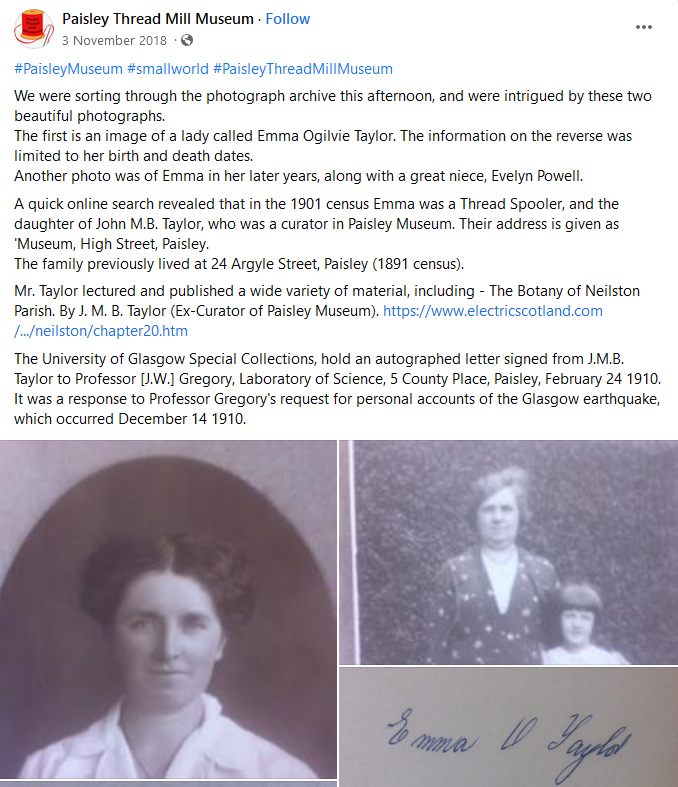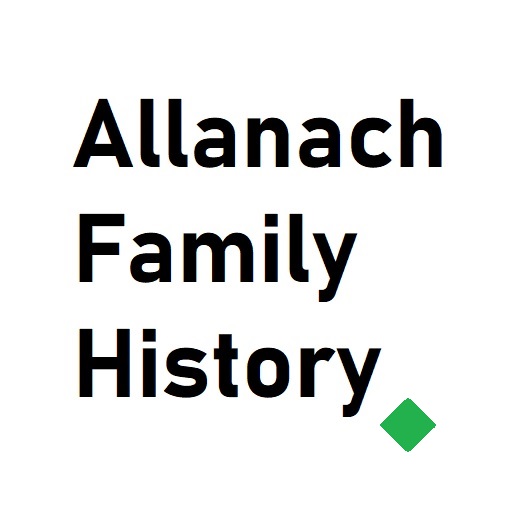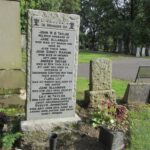Jean Allanach
Jean Allanach
Summary
Parents
- Father – John Allanach
- Mother – Jean Beveridge
Birth
Jean Allanach was born on 5 April 1855 to Jean Beveridge, age 38, and John Allanach, age 41.
Siblings
Jean had seven siblings
- John Allanach (born 1841)
- Agnes Allanach (born 1845)
- Francis Allanach (born 1845)
- James Allanach (born 1849)
- Alexander Allanach (born 1851)
- George Allanach (born 1857)
- Penelope Allanach (born 1861)
Marriage
Jean Allanach married John Moir Buchanan Taylor on 16 December 1876 when she was 21 years old.
Children
John and Jean had six children over 18 years :
- Andrew Soutter Taylor (born 1876)
- Emma Ogilvie Taylor (born 1880)
- ‘Frank’ Morris Young Taylor (born 1882)
- Lillie Flora Allanach Taylor (born 1888)
- Frederick Cecil Taylor (born 1889)
- John Sidney Nanson Taylor (born 1894)
Death
Jean Allanach died on 23 July 1942 in Paisley, Renfrewshire, when she was 87 years old.
Life Story
1855
Jean was born in 1855 to John Allanach (agricultural labourer) and Jean Beveridge. She is stated to be the couple’s sixth child (3 boys and 2 girls living, 1 boy deceased). She would be called both Jane and Jean in her lifetime. The birth certificate states she is born in Smithyhill, Alford. (likely Smiddyhill – see here for full Canmore description and photos)

1872
From William Jolly’s book on John Duncan :
“The first of John’s disciples here referred to was John M. B. Taylor, already mentioned. He was a farm-servant in the Vale of Alford, and for a time at Tillychetly on the Leochel, opposite Droughsburn. He first made the botanist’s acquaintance in 1871, when he saw his herbarium. At once he felt, as he says, “a peculiar charm in the man and his studies that struck a high-sounding chord in his nature.” In May, 1872, he took some schoolboys to the rare weaving shop, when the old man delightedly showed them his plants and described their peculiarities and discovery, till it was time to leave. John then accompanied them homewards, according to his kindly practice, and the young folks •indulged on the way in the unwonted pleasure of gathering the wild flowers by the roadside, and bringing them to be named by John, who spoke also of their medicinal properties. At parting, he talked earnestly to the ploughman of the joys of Botany, the charm it had been to himself in his loneliness, the contentment it had imparted in his lowly life, and his delight in solitary wanderings in search of his favourites, all uttered in what seemed to the young man a vein of “true poetry.”
Taylor was now thoroughly “bitten” with the subject, and set himself to its systematic study under John’s guidance. He commissioned his tutor that autumn to bring him a text-book from Aberdeen, which he did with pleasure, “Brook’s Introduction to the Linnwan System.” He visited the weaver at all spare hours, and went systematically into the study by reading books which John lent him. When John gave him the loan of any book, he was accustomed to say, “Noo, Johnnie, lad, dinna be over wed-fashioned wi’t ; be ill fashioned. Look in atween the brods and see fat’s in’t. There’s some fowks sac weelfashioned wi’ books that they never open them.”
In the mid-winter of 1873, John went to his garden and brought his scholar a Christmas rose, saying, “Tak’ that i’ yer han’, and gin ony o’ the ploughmen chiels speir fat it is, say it’s Helleborus nib er, and ye’ll sta’ them wi’ sic a name.”
1874
From William Jolly’s book on John Duncan :
“The following summer, Taylor made his first collection of plants, of considerable number, which he named and arranged according to Linnaus. He now paid weekly visits to Droughsburn. His delight in plants so increased that, to have as much time as possible with the botanist, he used to leave the farm at once without supper when work was over—a bowl of milk and bread being, however, placed by the kindly kitchen-maid to wait his late return, in the hay-loft where he slept.
At these visits, they used to hunt for plants in the long summer nights, John telling their common and technical names, peculiarities of structure, and medicinal and other properties, and seasoning his talk with much fun and humour, stories of his adventures, and good advice. This pleasant intercourse continued for several years, and Taylor says he never brought a plant to John which he was unable to name and describe. John’s remarkable memory struck him, as it did all that knew him, with his familiar knowledge of the localities where he had found plants. One evening, John and he set out to search for a certain species at some distance, but by the time they reached the spot, darkness had come down, and nothing could be seen. The eager old botanist, nevertheless, knew the place so well, though he had not been there for a year or two and though the plant had just appeared above ground, that he found it—after groping in the dark on hands and knees—and presented it to the lad.
The botanical garden at the cottage was a frequent means of instruction and study, and every plant there was-examined and .described.
Taylor’s progress was rapid and secure, and all holidays, of which he had only two in the year, were devoted to science. In time, he formed a more complete herbarium. To extend his knowledge of the flora of the country, in 1875 he spent some time in Forfarshire, where John’s. intimate knowledge of the country and the stations of plants= there proved of the highest service to him. Since then, Taylor has advanced in Botany, and now possesses a very good knowledge of it, both practical and theoretical. He has accumulated a collection which includes, it appears, most of the flowering plants, ferns, and grasses of Aberdeen, Banff and Kincardine, as also species from the north of England, where he has also botanised.
His studies have not been confined to Botany. He has gathered specimens in Archoeology, Geology, and Mineralogy. In 1869, he began Phrenology, which he studied both practically and theoretically for years, in books and on the heads of his friends. From 1871 to 1876, he made a series of Meteorological observations, in which John was much interested. He also studied Astronomy with great. earnestness, securing assistance and ‘encouragement from the old star-gazer; and. in 1872, he made observations in the Vale, for the “Astro-Meteorological Society” of London. Since that, he has gone more or less into several branches of Natural History, as shells, insects, and animals, of which he has a good selection. He has passed the Science and Art examinations in Botany, Geology, Animal Physiology, and Practical and Theoretical Chemistry. Altogether, he has developed, under the extraordinary difficulties that beset poverty and lowly condition in the country, remarkable aptitude and enthusiasm for the natural sciences. As he gratefully acknowledges, he received his first and deepest impulses towards these from John Duncan.”
1876
John Taylor weds Jean Allanach 16th December 1876 in Alford.
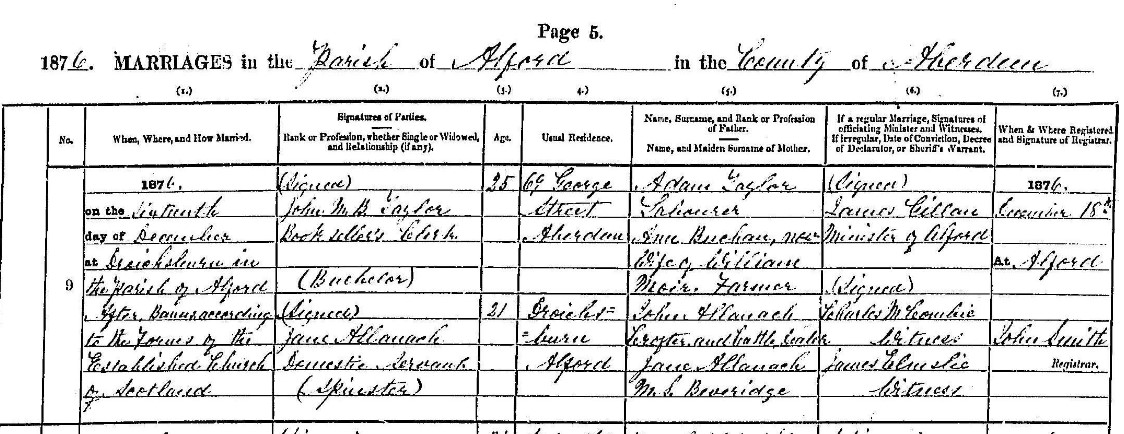
1879
John publishes an anonymous book called ‘Eleven Years at Farm Work being a true tale of farm servant life.’
It is almost unique in giving a detailed first hand account of life as a farm servant at the time, and is very critical of employment conditions and the farmers with whom he contracted. A full transcript is now available on the site. Click here.
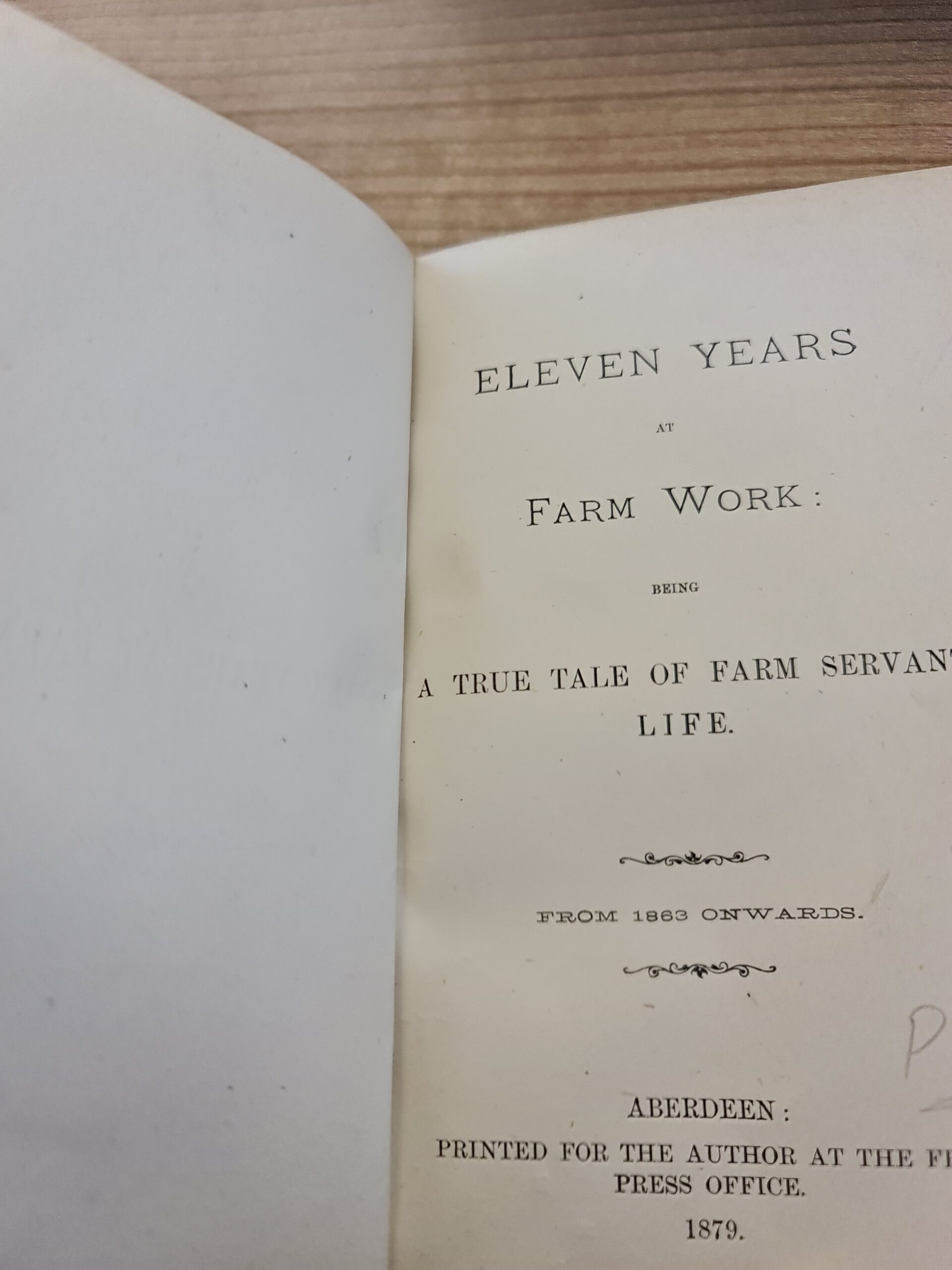
1881
According to the 1881 LDS census Jane (Jean) is now living at 27 Richmond Terrace, Aberdeen with husband John and son Andrew (3) as well as daughter Emma (7 months). Additionally, Penelope stays with them, as well as two male boarders. John’s profession is listed as an unemployed travelling coal (salesman).

1881
In 1881, the family return to Droughsburn to assist Jean Beveridge and Penelope Allanach and attend on John Duncan :
“John’s weakness increased greatly after this accident, and his need of attendance became more constant and exhausting. At length, in the beginning of July, Mrs. Allanach found the work too much for her and her daughter, and she asked her son-in-law, John Taylor, who had then some leisure, to come to assist her and attend to his old friend. Mr. Taylor came at once, and remained with him till his death, a month afterwards. He nursed him, anticipating and supplying his wants like more than son, inspired by reverence and affection for the man, which was now raised to tenderness by the patient’s weakness. It was an admirable and fortunate arrangement. It was also.a strange and unexpected happiness to the old botanist, that one of his most attached pupils should return the benefits he had received from him by soothing his dying pillow. The task was not light, either by night or day, for John gradually became helpless, and had to be lifted in and out of bed; but the strong arms that bore him were both able and willing.”
1891
By the time of the 1891 census, the family are living at 24 Argyle (Street), Paisley. In addition to John, Jane, Andrew, Emma, Frank, Lillie and Fred, there are two boarders stated. John Walker, 22, a (drapper?), and Sam Quinn (20) , a shoemaker.

This is what Argyle Street looks like today (number 24 first on left)
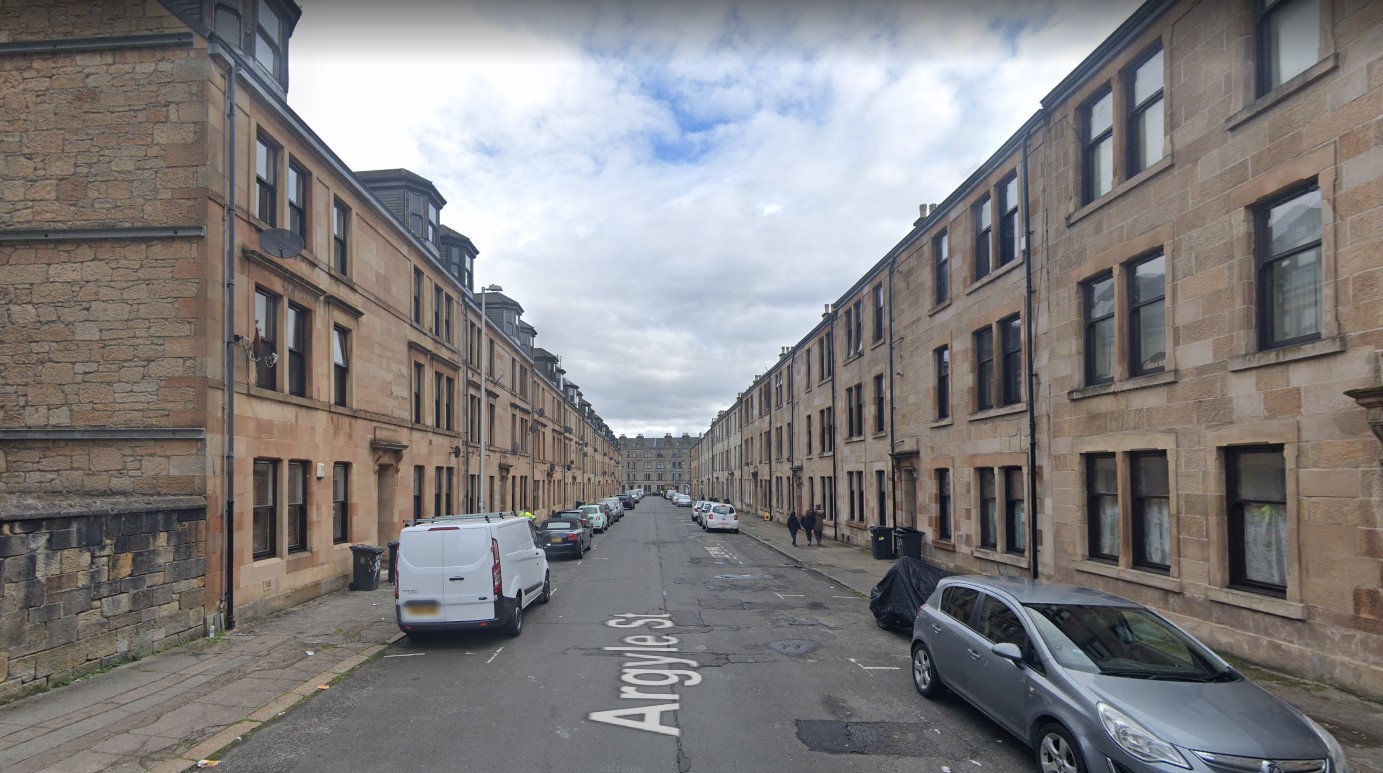
1895
John Taylor is listed as a teacher at his house , 24 Argyle Street, Paisley (in addition to his employment as an Assistant Curator) There is also an advert (below) for a Laboratory of Science at 109 Causeyside Street (central Paisley), teacher J.M.B. Taylor M.C.S. offering lectures on Applied Chemistry and practise on Commercial Analyses as well as classes on Botany and Geology.

1895
The couple’s youngest child, John Sidney Nanson Taylor, dies in infancy as a result of teething issues, aged just 13 months.
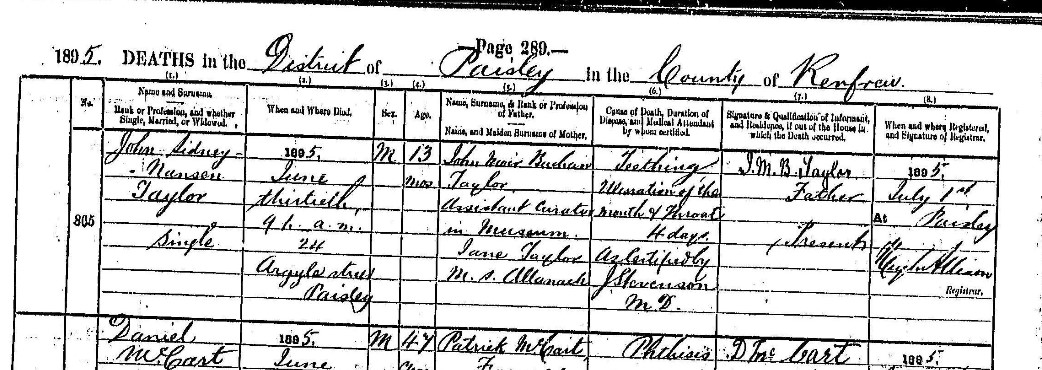
1900
The Paisley directory of 1900 confirms John as curator of the museum and residing at 18 Storie Street.


1901
According to the 1901 census, John is now curator of the Paisley museum and perhaps even living there with his family.
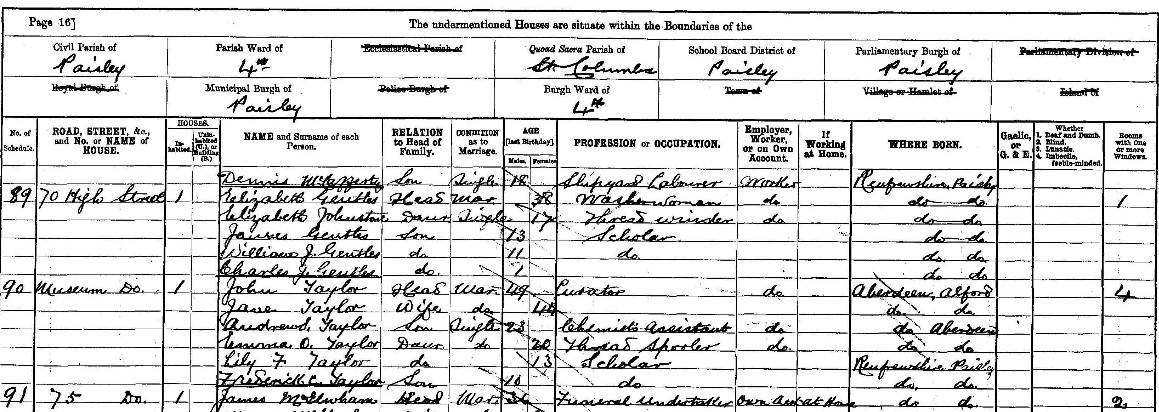
1905
By 1905, the family have moved again, now residing at 19 Love Street.
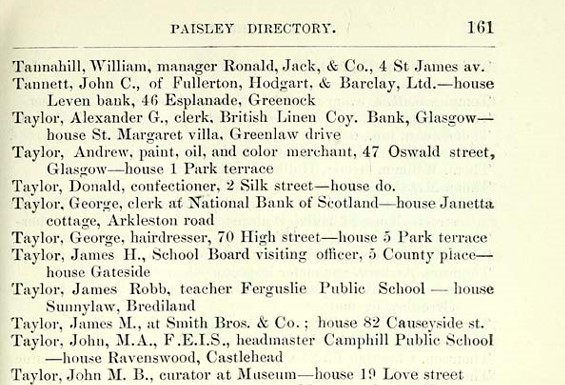
1911
John is now a ‘science teacher and scientist’ residing at 5 County Place, Paisley.
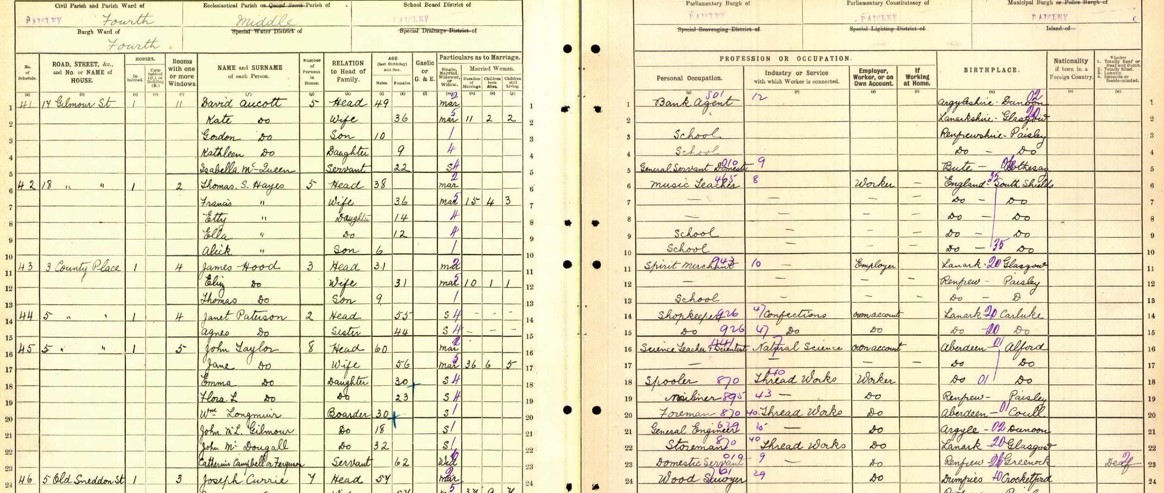
1912
John and Jean’s son Andrew Soutter Taylor dies in tragic circumstances in Coney Island New York from ‘Asphyxia by Gas’ whilst working at the funfair on 11th January 1912. The death street address is stated as ‘Steeple Chase Park St’ and his residence at the time was 181 West 16 St. He is buried in Greenwood Cemetery

Looking at the address, I think the ride he was working on could have been the ‘Top’. You can see the ride in this remarkable colourised film from 1910 (roughly forty seconds in)
1921
Jean’s husband John dies aged 69 on March 5th.
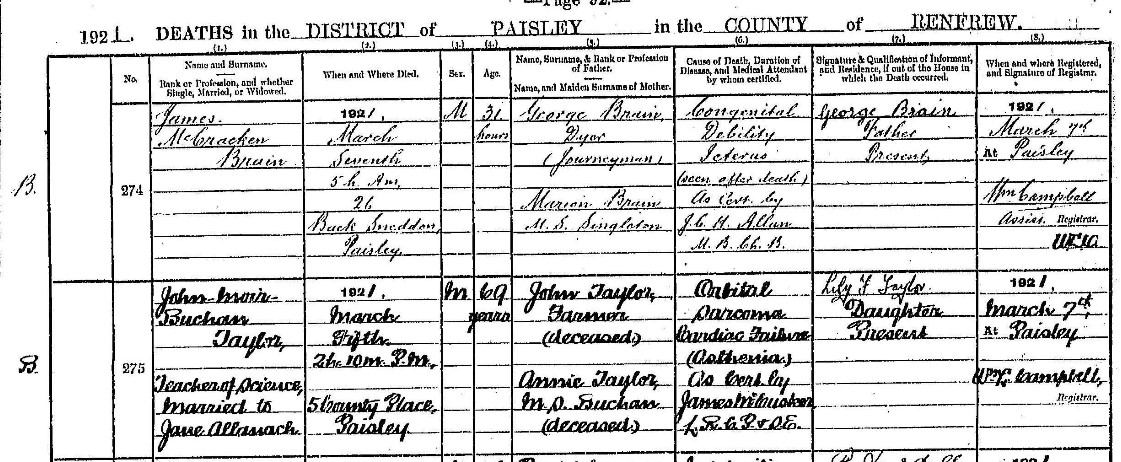
1921
The 1921 census shows Jane now a widow and head of household, and continuing to live at 5 County Place, Paisley. It is now a very full house. The grandchildren are likely to be of son Andrew who died in 1911 in New York.
- Daughter Emma (40) works at Coats & Co Ltd as a thread mill worker
- Granddaughter Lily M Taylor (16) works as a printer’s reader at W A Lochhead
- Grandaughter Emma M Taylor (11) is stated as being born in New York but a ‘res born Brit’ and is a scholar
- Grandson Andrew A Taylor (9) is also stated as being born in New York and a scholar
- Catherine S Henderson (20) is stated as a foster daughter from Edinburgh and works at Coats & Co Ltd as a thread mill worker
- There are also 7 male boarders (four Irish and three Scottish ranging in age from 20 to 41 who work as builders and labourers.
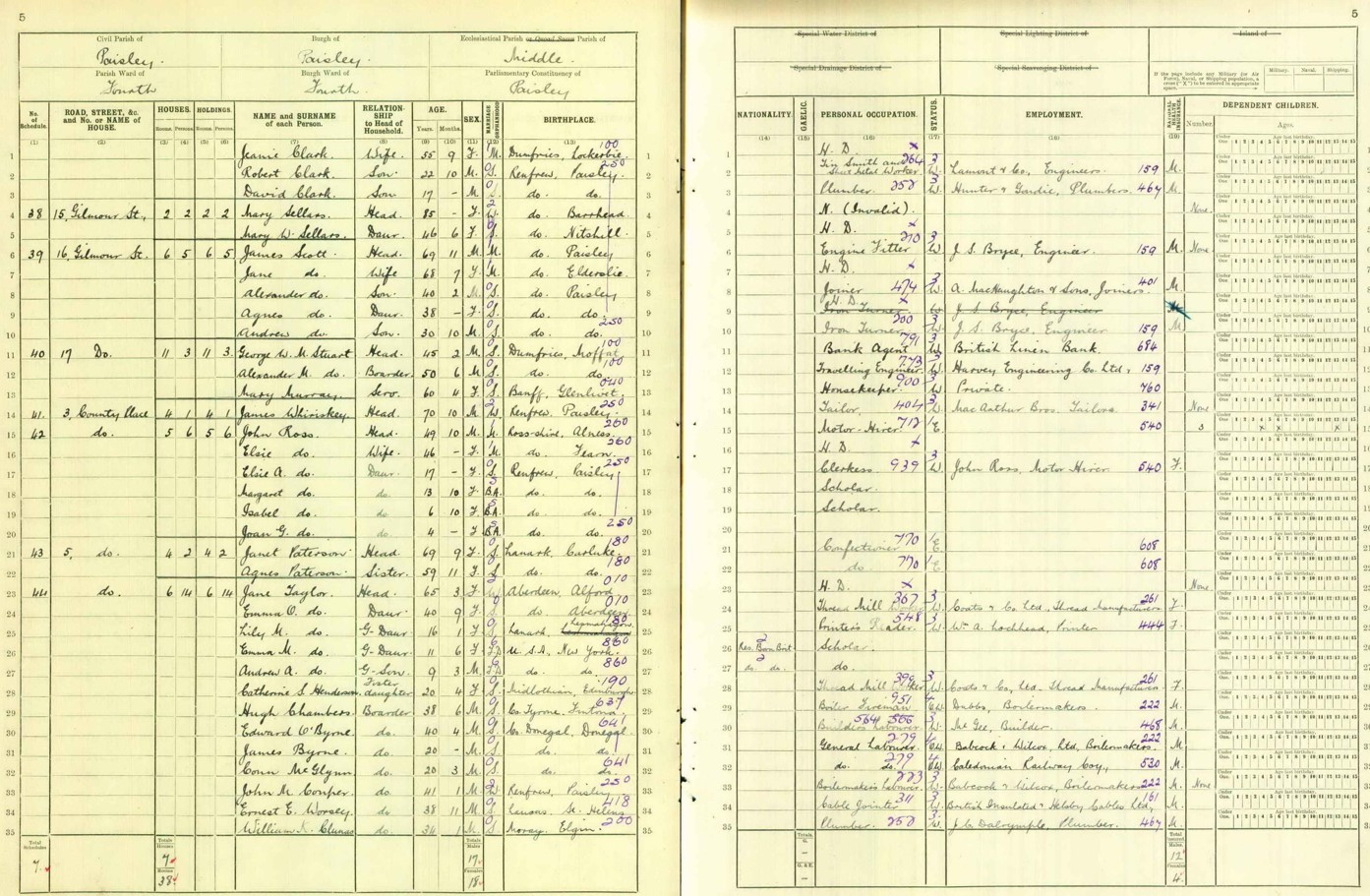
1922
A further tragic loss. Just a year after her husband John dying, daughter (Lily) Flora dies aged just 34 after suffering a gastric ulcer. She worked as a milliner in Paisley.
1942
Jean Allanach dies on 23 July 1942 in Paisley, Renfrewshire, when she was 87 years old. She is buried in Hawkhead Cemetery, Paisley
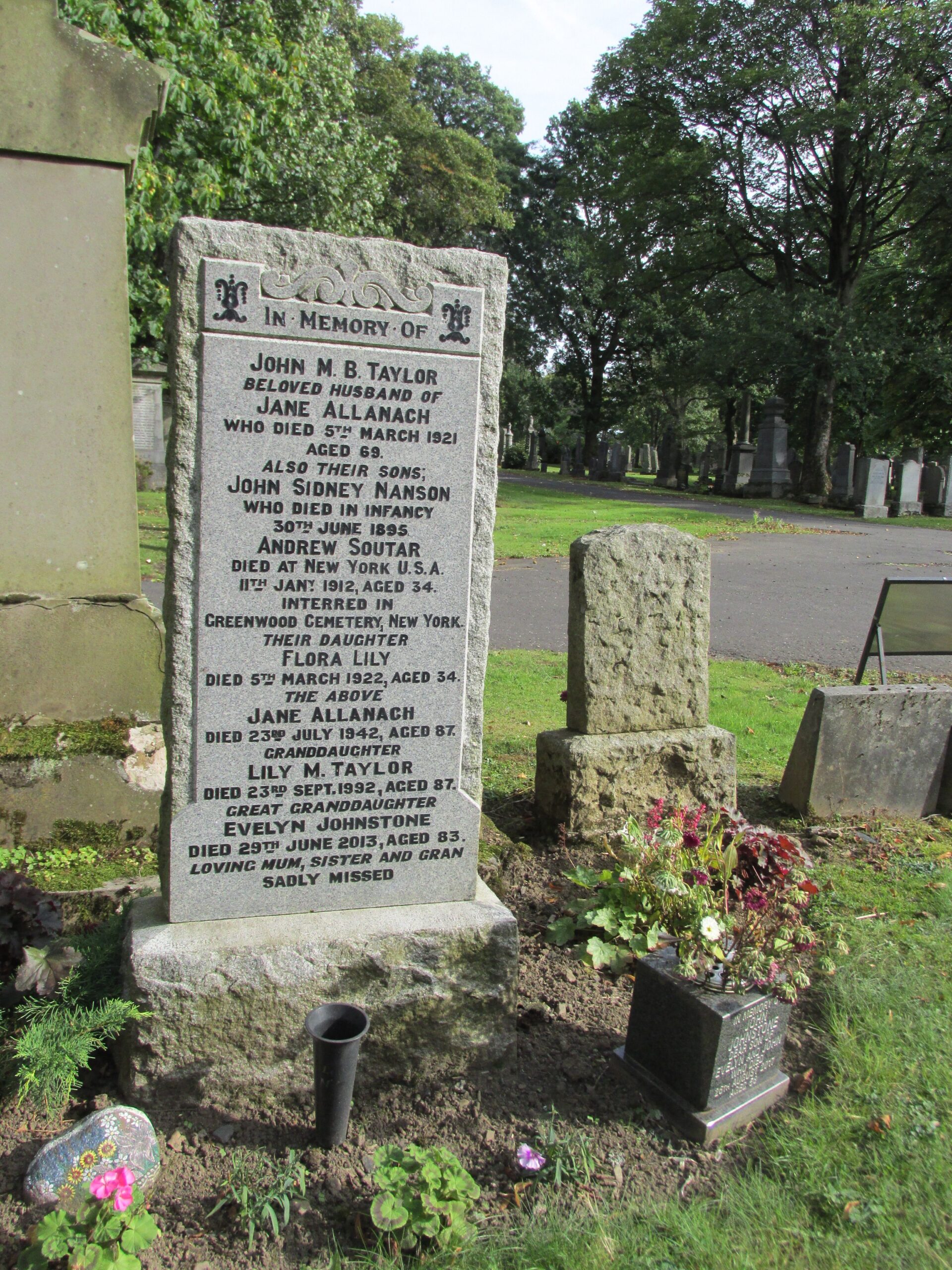
1992
Lily Taylor passes in 1992, having worked forty years at the Paisley Express.

Present Day
The Paisley Thread Museum posted a photo of Jean’s daughter Emma Ogilvie Taylor (likely early 1900s) and provide further information on sources of information on J M B Taylor, including a letter recording the Glasgow earthquake of 1910.
